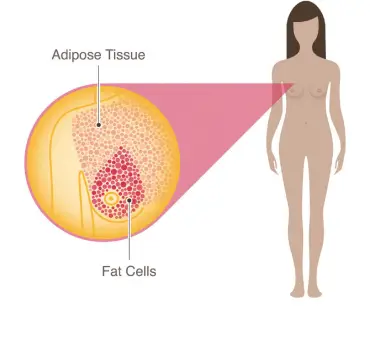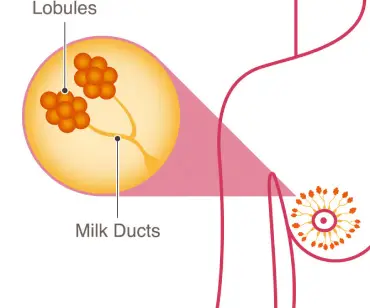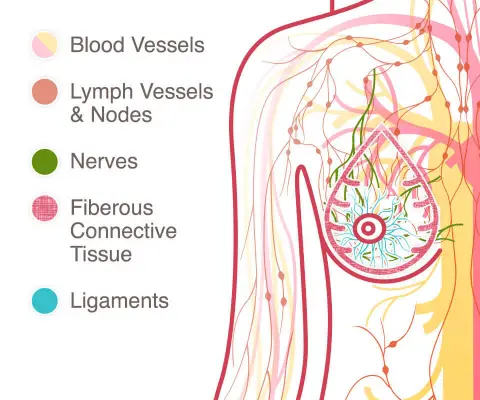Breast Anatomy
As you learn about breast cancer, you will likely hear medical terms referring to the anatomy of the breast. Understanding the different parts and functions of the breast will help you better grasp the details of breast cancer.
Knowing details about your breasts, the way they function, and body systems helps you to:
- Make informed decisions.
- Have a better dialogue with your doctor.
- Be aware of anything unusual.

Adipose tissue
The female breast is mostly made up of a collection of fat cells called adipose tissue. This tissue extends from the collarbone down to the underarm and across to the middle of the ribcage. As a woman ages, especially once she reaches menopause, the breast tissue contains more adipose (fatty) tissue.
Lobes, lobules, and milk ducts
A healthy female breast is made up of 12–20 sections called lobes. Each of these lobes is made up of many smaller lobules, the gland that produces milk in nursing women. Both the lobes and lobules are connected by milk ducts, which act as stems or tubes to carry the milk to the nipple. These breast structures are generally where the cancer begins to form.

Lymph system

Also within the adipose tissue is a network of ligaments, fibrous connective tissue, nerves, lymph vessels, lymph nodes, and blood vessels. The lymph system, which is part of the immune system, is a network of lymph vessels and lymph nodes running throughout the entire body.
Similar to how the blood circulatory system distributes elements throughout the body, the lymph system transports disease-fighting cells and fluids. Clusters of bean-shaped lymph nodes are fixed in areas throughout the lymph system and act as filters by carrying abnormal cells away from healthy tissue.
Have questions about breast health and wellness?
Download the free eBook, What Every Woman Needs to Know About Breast Health, to learn more.
What Every Woman Needs to Know eBook


